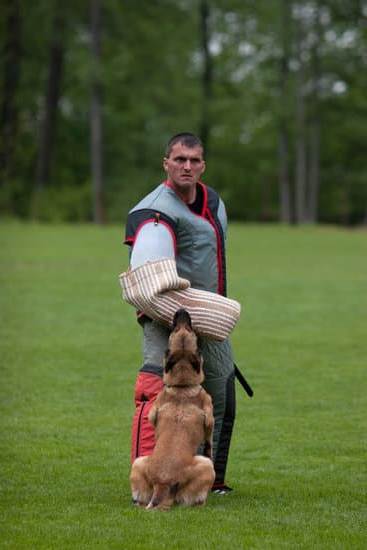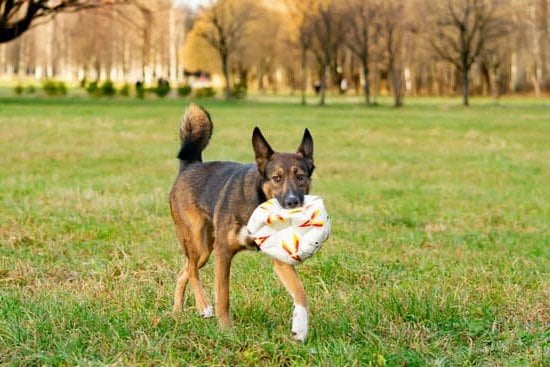Are you wondering how to train your dog from biting? It is crucial to understand why dogs engage in this behavior before implementing training techniques. Dogs may bite due to various reasons, such as fear, pain, aggression, or even playfulness. By delving into the underlying causes of biting behavior, you can effectively address and modify this unwanted behavior in your furry friend.
Training your dog from a young age is essential in preventing biting incidents. Early training provides a solid foundation for teaching appropriate behaviors and social skills to your puppy. By starting training early, you can instill positive habits and prevent biting tendencies before they escalate. Consistent training sessions and positive reinforcement are key components in shaping your dog’s behavior and discouraging aggressive tendencies.
Using positive reinforcement techniques is a gentle and effective way to deter biting behavior in dogs. Rewarding good behavior with treats, praise, or toys encourages your dog to repeat desired actions while learning that biting is unacceptable. Consistency is vital when implementing these techniques to ensure lasting results. Additionally, socialization practices with other dogs and people can help your dog learn appropriate interaction skills, reducing the likelihood of aggressive behavior like biting.
The Importance of Early Training
Understanding the importance of early training in dogs is crucial when it comes to preventing biting behavior. Puppies go through a teething stage where they explore the world around them with their mouths, which may lead to nipping and biting.
By starting training from a young age, you can establish good habits and boundaries that will help prevent biting as your dog grows older. Training your puppy early on sets the foundation for appropriate behavior and communication between you and your furry companion.
Introducing Bite Inhibition
One important aspect of early training to prevent biting is teaching bite inhibition. This involves teaching your puppy to control the force of their bite so that they learn not to cause harm when interacting with humans or other animals.
A common technique used is yelping or saying “ouch” in a high-pitched tone when your puppy bites too hard, followed by immediately stopping playtime. This helps them understand that gentle play is encouraged, while rough play leads to a halt in interaction.
Handling and Socialization
Early training also includes exposing your puppy to different people, animals, and environments to help them become well-socialized. Proper socialization can reduce fear-based aggression and other behavioral issues, including biting. By introducing positive experiences during interactions with others, your puppy learns how to appropriately interact without resorting to biting. Additionally, teaching your dog proper handling techniques from an early age can help build trust between you and your pet, further reducing the likelihood of biting incidents.
Positive Reinforcement Techniques
Dogs, like humans, exhibit biting behavior for various reasons. Understanding why dogs bite is crucial in addressing and correcting this behavior. Dogs may bite out of fear, stress, pain, or even playfulness.
By recognizing the underlying cause of your dog’s biting tendencies, you can tailor your training approach accordingly. Whether it’s teaching them to communicate differently when feeling scared or redirecting their energy towards appropriate chew toys during playtime, understanding why your dog bites is the first step towards effective training.
When it comes to training a dog from biting, positive reinforcement techniques are highly effective. Rewarding good behavior and providing encouragement can go a long way in discouraging biting behavior in dogs. When your dog refrains from biting and instead engages in gentle play or follows a command without exhibiting aggressive tendencies, be sure to praise and reward them with treats or affection. This positive association helps reinforce the desired behavior and encourages your dog to continue behaving appropriately.
Consistency is key when implementing positive reinforcement techniques in training your dog from biting. By consistently rewarding good behavior and ignoring or redirecting negative behavior, you are sending a clear message to your dog about what is expected of them.
Remember to stay patient and persistent throughout the training process as changing a habit takes time. With dedication and consistent use of positive reinforcement techniques, you can effectively train your dog from biting and promote harmonious interactions between you and your furry companion.
| Positive Reinforcement Techniques | Using Rewards and Encouragement |
|---|---|
| Understanding the reasons behind biting behavior | Rewarding good behavior with treats or affection |
| Consistency is key in reinforcing desired behaviors | Encouraging appropriate conduct through positive associations |
Socialization Practices
Dogs are naturally social animals and, as such, it is essential to teach them appropriate behavior around other dogs and people. Proper socialization can help prevent biting incidents by ensuring that your dog interacts positively with others. Here are some tips on how to train your dog from biting through socialization practices:
- Expose your dog to different environments: Early exposure to a variety of environments, such as parks, sidewalks, and pet-friendly establishments, can help your dog become more comfortable around different people and dogs.
- Arrange playdates: Setting up playdates with other well-behaved dogs can teach your pup proper social cues and boundaries. Make sure the interactions are supervised and positive to promote good behavior.
- Enroll in obedience classes: Obedience classes not only provide training for basic commands but also offer controlled environments for socialization. Your dog will learn to follow commands while interacting with other dogs under the guidance of a professional trainer.
By incorporating these socialization practices into your training routine, you can help your dog develop good behaviors around other dogs and people, reducing the likelihood of biting incidents. Remember that consistency is key when implementing these techniques, and it may take time for your dog to fully adjust to new social situations.
Seeking professional help may also be beneficial if you encounter challenges with socializing your dog or if they continue to exhibit biting behavior despite training efforts. A professional dog trainer can assess the situation and provide tailored advice on how to address any issues effectively. It’s important to remain patient and persistent throughout the training process to ensure that your furry companion learns appropriate behavior in various social settings.
Redirecting Biting Behavior
Dogs may exhibit biting behavior for various reasons, including teething, playfulness, fear, or aggression. Regardless of the cause, it is crucial for dog owners to address this behavior promptly to prevent any potential harm. One effective way to redirect your dog’s biting is by providing appropriate chew toys. By offering your dog safe and durable chew toys, you can teach them what is acceptable to bite and gnaw on.
When training your dog to redirect their biting towards chew toys, it is essential to make the toy more appealing than other objects in the environment. You can achieve this by selecting a variety of textures and shapes that entice your dog’s interest.
Additionally, be sure to praise and reward your dog when they choose to chew on the toy instead of inappropriate items. This positive reinforcement helps reinforce the desired behavior and encourages them to continue chewing on their toys.
Another useful strategy for redirecting biting behavior is engaging in interactive play with your dog using toys specifically designed for chewing. Play sessions not only provide physical exercise but also offer mental stimulation for your pet. By incorporating these playtime activities into your daily routine, you can help channel your dog’s energy towards appropriate outlets while strengthening the bond between you and your furry companion.
| Strategy | Benefit |
|---|---|
| Selecting a variety of textures and shapes for chew toys | Entices interest and encourages chewing on appropriate items |
| Praising and rewarding when choosing chew toys over other objects | Reinforces desired behavior and provides positive reinforcement |
| Engaging in interactive play with chewing-specific toys | Provides mental stimulation and strengthens bond with owner |
Consistency in Training
When it comes to addressing biting behavior in dogs, consistency is key. Dogs thrive on routine and clear expectations, so being consistent with your training methods is essential for effectively stopping biting. Here are some tips on how to maintain consistency in training your dog from biting:
- Set clear boundaries: Make sure your dog understands what behavior is acceptable and what is not. Consistently enforce these boundaries to help your dog learn what is expected of them.
- Use the same command cues: When teaching your dog not to bite, use the same cue words consistently. Whether it’s “No bite” or “Leave it,” using a consistent command will help reinforce the desired behavior.
- Be consistent with rewards and consequences: Reward good behavior with treats and praise, while providing consequences (like ignoring or time-outs) for biting behavior. Consistency in how you reward and correct will help your dog understand what actions are desirable.
Training your dog from biting requires patience and persistence, as changing behavior takes time. Stay committed to practicing consistent training methods to see results. Remember, every interaction with your dog is an opportunity for training, so be mindful of staying consistent in all situations.
- Stay patient: It can be frustrating when trying to train your dog from biting, but remember that dogs learn at their own pace. Stay patient and avoid getting frustrated during the process.
- Seek support if needed: If you’re struggling with training your dog from biting despite being consistent, don’t hesitate to seek professional help. A professional dog trainer can provide guidance and advice tailored to your specific situation.
- Acknowledge progress: Celebrate small victories along the way as you work on stopping biting behavior in your dog. Recognizing progress will keep you motivated and encouraged to continue with consistent training efforts.
By consistently applying positive reinforcement techniques, setting clear boundaries, and staying patient throughout the process, you can effectively train your dog from biting behavior over time. Remember that every interaction with your furry friend is an opportunity for reinforcement and correction, so stay consistent and committed to helping your dog develop appropriate behaviors.
Seeking Professional Help
Signs It’s Time to Seek Professional Help
If you have tried various training techniques on your own and still struggle with your dog’s biting behavior, it may be time to seek the help of a professional dog trainer. Signs that indicate the need for professional assistance include persistent or aggressive biting, inability to redirect the behavior, and worsening of the biting over time. A professional trainer can provide specialized knowledge and techniques tailored to your dog’s specific needs.
The Benefits of Working With a Professional
Professional dog trainers have the expertise and experience to address complex behavioral issues like biting. They can assess your dog’s behavior accurately, identify triggers for the biting behavior, and develop a customized training plan to effectively address the issue. Additionally, working with a professional trainer can help you learn valuable skills and techniques that will not only stop your dog from biting but also improve your overall bond and communication with your furry companion.
Selecting the Right Professional Dog Trainer
When choosing a professional dog trainer to help with biting issues, it is essential to consider their qualifications, experience, training methods, and reviews from previous clients. Look for trainers who use positive reinforcement techniques and have a successful track record in addressing biting behavior.
Schedule an initial consultation with potential trainers to discuss your concerns and see how they interact with your dog. Finding the right professional trainer can make all the difference in successfully overcoming your dog’s biting habits.
Patience and Persistence
Training a dog to stop biting requires patience and persistence. It is essential to understand that changing a behavior takes time, and consistency is key in the training process. Remember that your dog is learning and adapting to new behaviors, so remaining patient throughout this process is crucial.
One of the most effective ways to train your dog from biting is by using positive reinforcement techniques. Rewards and encouragement play a significant role in discouraging biting behavior. By rewarding good behavior and ignoring or redirecting negative behavior, you are teaching your dog what is acceptable and what is not. This approach helps create a positive association for your dog, making them more likely to follow your cues.
Additionally, seeking professional help can sometimes be necessary when dealing with persistent biting issues. A professional trainer can provide guidance tailored to your specific situation and offer valuable insights on how to address the underlying reasons behind your dog’s biting behavior.
Remember that every dog is different, so consulting a professional can make a significant difference in effectively training your dog from biting. Stay committed, be patient, and consistent in your training efforts – with time and effort, you can successfully teach your furry friend appropriate behaviors and strengthen the bond between you both.
Frequently Asked Questions
How Do You Discipline a Dog to Stop Biting?
Discipline a dog to stop biting by using positive reinforcement techniques, such as rewarding good behavior and redirecting their attention when they try to bite. Consistency, patience, and proper socialization are key in teaching a dog not to bite.
Can a Dog Be Trained Out of Biting?
Yes, a dog can be trained out of biting through consistent training, socialization, and positive reinforcement. It is important to understand why the dog is biting in the first place and address any underlying issues or triggers that may be causing this behavior.
How Should I Teach My Dog Not to Bite?
To teach your dog not to bite, start by socializing them from a young age with other dogs and people. Use positive reinforcement training methods like clicker training or treats to reward good behavior and redirect biting tendencies towards appropriate toys or chew items. Consistency and patience are crucial in this process for long-term success.

Welcome to the blog! I am a professional dog trainer and have been working with dogs for many years. In this blog, I will be discussing various topics related to dog training, including tips, tricks, and advice. I hope you find this information helpful and informative. Thanks for reading!





